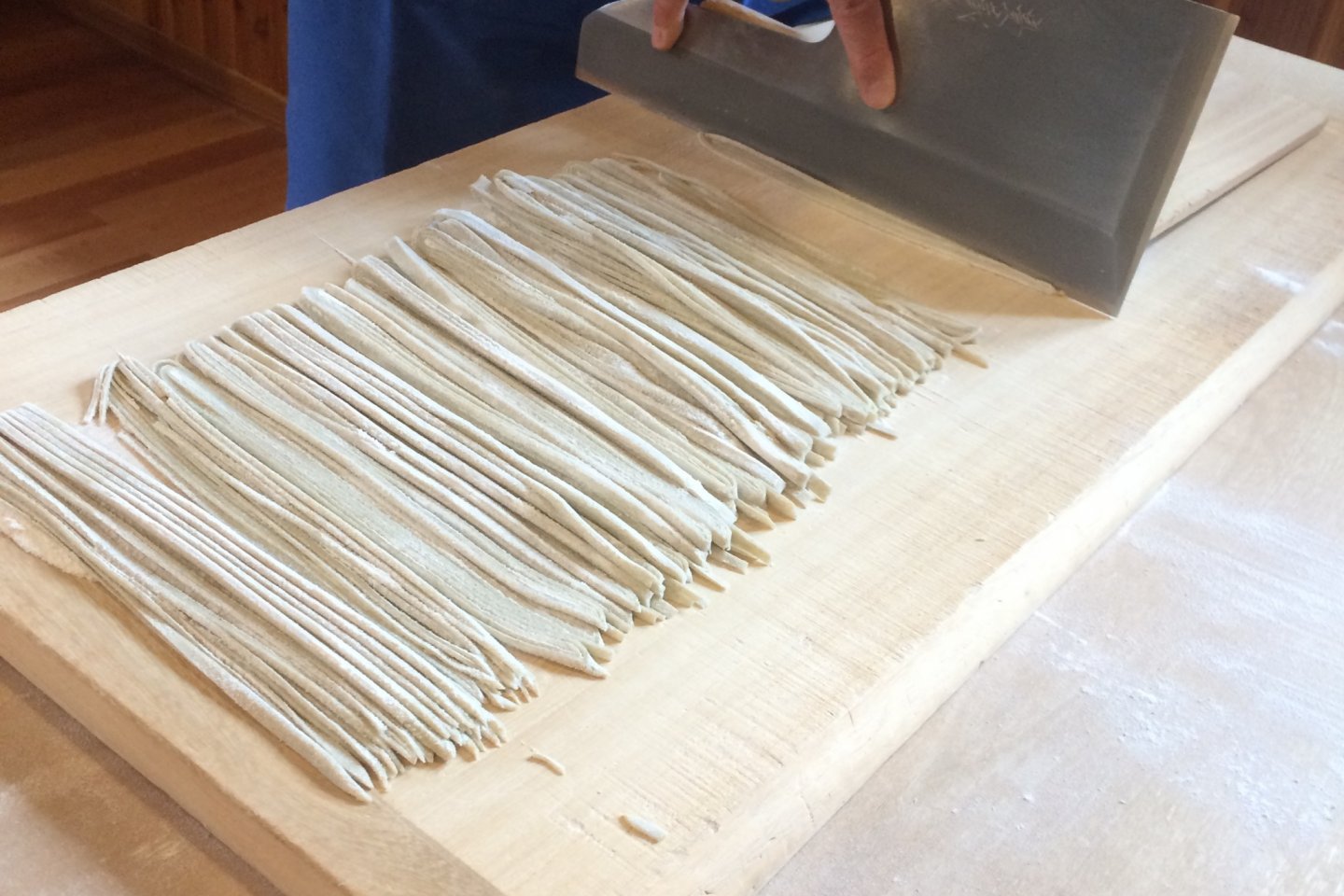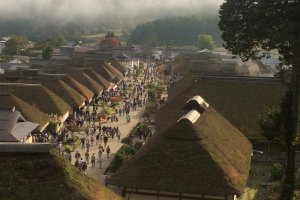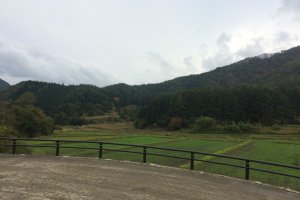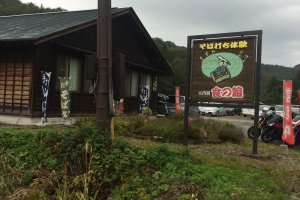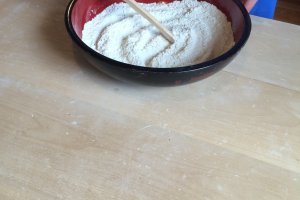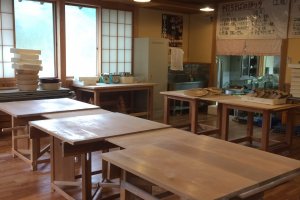If you make your way out of the samurai city of Aizuwakamatsu toward the south, you will stumble upon a beautiful little area called "Ouchijuku" in the town of Shimogo. This area was a former post town during the Edo Period in Japan, and the buildings along the road are well preserved. Visitors are drawn from all over Fukushima Prefecture and the rest of Japan because of the beautiful thatched roofs and long history.
Perhaps the most famous food that Ouchijuku is known for is a dish called "Negi Soba." Negi Soba is handmade buckwheat noodles that is eaten with a giant leek. If you thought eating with chopsticks was difficult, try scooping up soba noodles with a vegetable! On my second visit to this beautiful area nestled in the mountains, I had the opportunity to make my own traditional soba noodles at Shoku no Yukata.
This studio is not located on the main street, but a short walk up the road (there is also a back road. When you reach the end of Ouchijuku street at the base of the mountain, turn right and follow the path until you find a large wooden building). Prior reservations are required, so please keep that in mind.
The soba-making course takes about an hour, which includes making the soba from scratch and also trying food samples that are provided. The cost is ¥4,000 and includes 500 grams of noodles (serves about 4 people, so a group of 4 can work on one batch), use of the professional tools, and demonstrations provided by the staff.
We were lead into a large room with several tables, which make it suitable for small or large groups. A family was already working on making noodles when we came in. We split into groups of 4 or 5 and were handed a bowl of flour. I expected the process to be easy, but I was impressed by the time and effort it takes to make soba.
Over the course of an hour we kneaded the soba noodles carefully into several shapes and were taught the proper way to use our palms and how to rotate the dough to make the best soba. The dough was rolled into a ball, flattened, and then carefully shaped into a square. After neatly folding it, we were shown how to cut it using a special knife and cutting board. It was surprisingly difficult!
Once we were finished, our noodles were split into four batches and packaged for us to take home with instructions provided. It was a great experience, and done in a place that is well known for their great soba.
Although Ouchijuku is far from most towns, it is quite easy to access due to the number of visitors each year. You can reach Ouchijuku by bus or a 10-minute taxi ride from Yunokami Onsen Station (1 hour if you walk).
Shoku no Yukata offers a great experience if you want to do more than just observe a traditional town and want to really experience it. The reason soba-making was added to our tour was because the governor of Fukushima recommended it!
